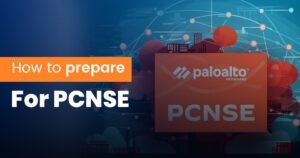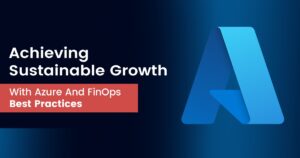
Networking Mastery: IPSpecialist Key to Job-Ready Success
Introduction In today’s digital era, where information flows ceaselessly through vast networks, the role of IP (Internet Protocol) specialists has become pivotal. These professionals ensure
Unlock the Power of FortiGate Mastery with Our Latest Release Fortinet Certified Associate – FortiGate Operator Course. Enroll Now!

Introduction In today’s digital era, where information flows ceaselessly through vast networks, the role of IP (Internet Protocol) specialists has become pivotal. These professionals ensure

Introduction Palo Alto Networks Certified Network Security Engineer (PCNSE) certification is a highly sought-after professional certification. It validates that candidates know how to design, install,

Introduction Companies worldwide are committed to reducing their IT carbon footprint, championing a more sustainable future through efficiency and cost optimization initiatives. Cloud sustainability is
Table of Contents
FinOps or Cloud Financial Operations is a business discipline and collection of best practices and technology for maximizing enterprise cloud spend that combines the phrases finance and operations.
The term “FinOps” is derived from the DevOps software development approach, with the addition of a financial component, and stresses communication and collaboration across multiple teams involved in cloud service utilization.
IPSpecialist is a platform that stands out for its diverse courses in Cloud computing. IPSpecialist offers online training and career support, serving as a centralized hub for individuals seeking Cloud Computing knowledge. This article is all about FinOps. Let’s get started.
We can break down Cloud FinOps into six core principles, as shown in the given figure.
Team collaboration is an essential component of Cloud FinOps. A strong team that can collaborate towards a single goal is required to maximize an organization’s financial performance in the cloud. As a result, adopters place a high value on communication, collaboration, and breaking down silos. Working collaboratively, teams can more effectively identify cost-cutting opportunities and design more efficient cloud operations.
Ownership is another critical principle of Cloud FinOps. The overall purpose of Cloud FinOps is for everyone to accept accountability for their activities.
To that end, Cloud FinOps practitioners encourage all members of an organization to take responsibility for their cloud usage about their budget. They can more efficiently discover and eliminate waste if they take responsibility for their cloud consumption.
FinOps practitioners recognize the importance of centralized control even as they encourage everyone to take responsibility for their cloud usage.
Accessible reports are another critical principle of Cloud FinOps. Developers and engineers are a particularly important demographic. As the cloud’s largest consumers, they require immediate visibility into their costs and budget alerts. The goal is to foster a culture of financial responsibility and discourage reckless spending.
Creating accessible reports in the FinOps (Financial Operations) context is crucial for several reasons. Accessible reports can enhance transparency, improve communication, and ensure that financial information is readily available and understandable for a diverse audience.
FinOps provides more than just visibility and control over cloud utilization and expenditures. It also tackles best practices, disciplines, and a culture of why and how money is spent. The entire value returned to the business for a specific expenditure amount is determined by taking into account several factors of economics.
The final principle of Cloud FinOps is to leverage the variable cost model of the public cloud. To that end, organizations using Cloud FinOps strive to minimize their unused capacity and match their utilization to their business needs.
FinOps, or cloud financial operations, is a collaborative approach to managing cloud spending that combines financial management principles with cloud engineering and operations. It aims to optimize cloud resource usage, minimize costs, and ensure that cloud spending aligns with business objectives.
Adopting FinOps involves implementing best practices to optimize cloud spending while aligning financial management with business goals. Here are some essential best practices for organizations looking to embrace FinOps:
Create a cross-functional FinOps team that includes finance, operations, and development representatives. This team will drive the FinOps practices and ensure collaboration across departments.
Establish clear financial policies and guidelines for cloud usage. This includes defining budgeting practices, cost allocation methodologies, and governance policies to ensure adherence to financial goals and compliance requirements.
Implement a robust tagging strategy to categorize resources and allocate costs accurately. Tags help identify each resource’s purpose, owner, and other relevant metadata, making tracking and analyzing costs easier.
Utilize cloud provider tools and third-party solutions to gain visibility into your cloud spending. Regularly generate and review cost reports to identify trends, anomalies, and opportunities for optimization.
Provide training and awareness programs to teams across the organization. Ensure stakeholders understand their actions’ impact on cloud costs and promote a culture of cost-conscious decision-making.
Develop a cost allocation model that accurately assigns costs to different business units, projects, or teams. This enables better accountability and helps in identifying areas for optimization.
Continuously evaluate resource usage and rightsize instances to match actual workloads. This involves selecting the appropriate instance types and sizes to avoid over-provisioning or underutilization.
Consider security and compliance requirements when implementing FinOps practices. Ensure that cost optimization efforts do not compromise the organization’s security posture or violate regulatory standards.
This pillar lays the groundwork for creating a cost- and value-aware culture in cloud FinOps and directs the process of cultural transformation. The main objective is to enable frictionless cloud governance and streamline IT financial processes to promote financial accountability and expedite business value realization.
Accurate data and valuable metrics are the cornerstones of any successful process, and this begins with the idea of cloud cost visibility and traceability. Your organization’s use of cloud resources is underpinned by labeling and tagging data architecture, which is driven by appropriate resource hierarchy and project structure standards.
Cloud cost optimization involves more than just cost reduction; it also involves strategic financial allocation to optimize business value. It is an ongoing, iterative process that offers a standardized approach to manage and visualize cloud consumption efficiently.
A fundamental skill in finance organizations, financial planning has a direct impact on how accurately each company can forecast its use of cloud computing. Accurately predicting financial metrics that are established annually to inform the company’s financial goals is the main goal of financial planning.
FinOps in future will likely involve several trends and developments that align with the evolving landscape of cloud computing and financial management. Here are some potential directions for the future of FinOps:
FinOps may integrate more tightly with DevOps and AIOps (Artificial Intelligence for IT Operations) practices. Automation, machine learning, and AI could significantly optimize cloud costs by predicting usage patterns, identifying anomalies, and automating cost-saving measures.
As organizations increasingly adopt multi-cloud and hybrid cloud strategies, FinOps practices may evolve to address the challenges associated with optimizing costs across cloud providers and on-premises environments.
Within the FinOps framework, the use of advanced analytics and reporting tools may increase. Predictive analytics, data visualization, and actionable insights could empower organizations to make informed decisions about cost optimization.
To conclude, FinOps, or the integration of financial management with cloud operations, has emerged as a critical discipline for firms utilizing cloud services. FinOps principles effectively allow firms to save expenses, improve visibility, and connect cloud spending with strategic goals. FinOps is projected to play an increasingly important role in managing the financial aspects of cloud operations as the cloud computing ecosystem evolves.
© 2022 All rights reserved | Privacy Policy | Terms and Conditions | Sitemap




